A completely yellow Wasp!!
There are a few cherries on the cake within the motorcycle philately. And with this we don't mean test-prints, misprints and other expensive stamps that can be bought but only at high price.
Like there is the Spanish
Virgen del Pilar stamp that is hard to obtain or the Guatamalan President Ubico stamp with the police Harleys. The Chinese province stamps are also quite scarce, and from Italy the blue Guzzi non-emissionate air mail stamp is a rare item.
Since 1996 there is another sought after Italian stamp: the
Vespa Giallo or the Yellow Vespa.
The scooter that is depicted on the stamp is a bit bluish, but with yellow the margin is meant, which is completely yellow on the special specimen of this stamp but white on the officially issued stamp (image on the left).
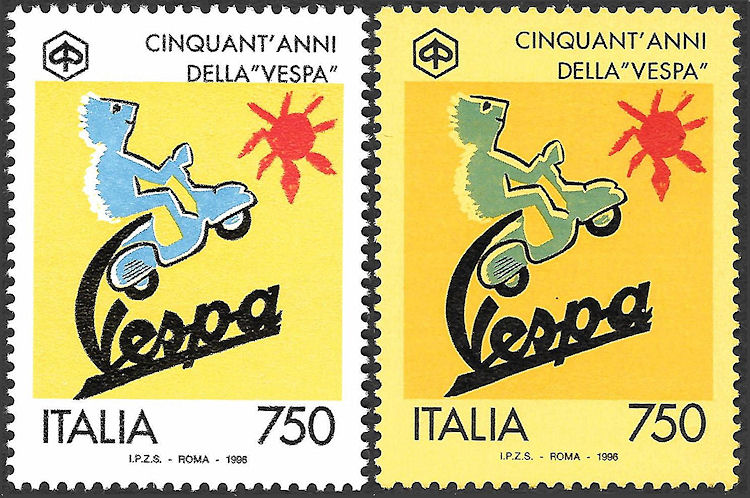
The printer, Istituto Poligrafico e Zecca dello Stato SpA in Riccione, got the assignment to print a stamp on the occasion of the 50th anniversary of the Vespa scooter, in an edition of 3 million pieces. On Juni 20th 1996 the stamp was sold for the first time.
Since a few year we now and then see the sought after stamps, lovingly called the "Vespa Giallo", pop up at various auctioneers and traders. According to the sellers there should be only 1 sheet of 50 stamps known, but the amount that is offered points to a larger number.
However, there are a few different stories about the origin of this totally yellow stamp.
The first is the story that tells that one sheet of yellow paper has been in between the sheets white printing paper. In paper production the fibers are coloured before the sheets are formed, and thus the backside of the sheets should also be coloured. That is not the case, as the backside of the stamp is white. Apart from that the stamps have been printed on an Intaglio-press which uses rolls of paper. A complete yellow roll would immediately attract attention.
Intaglio presses use multiple printing passes, and in this case the printer used a 6 pass press with coupled shaving perforator and cutting machine.
A different colour would thus
immediately be noted.
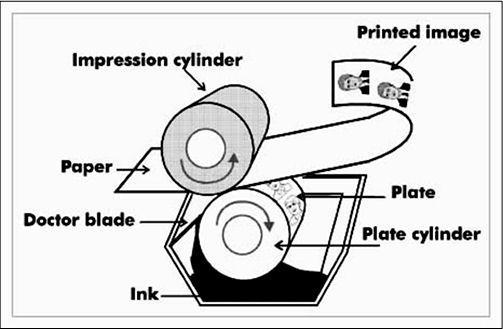 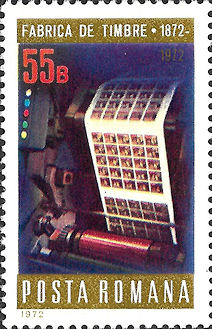
Principle of an Intaglio printing press. Several of these plates in different colours produce the image
A second story is that the original intention was to use the image of an advertisement card, that has a completely yellow background. Perhaps you know this card:
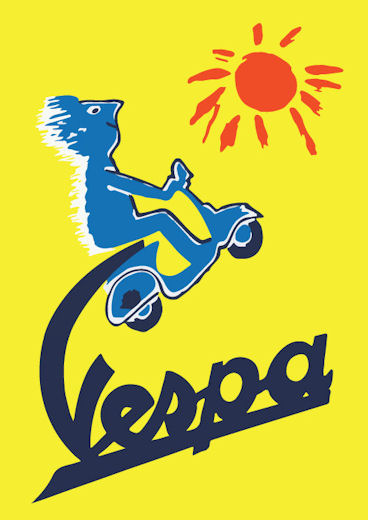 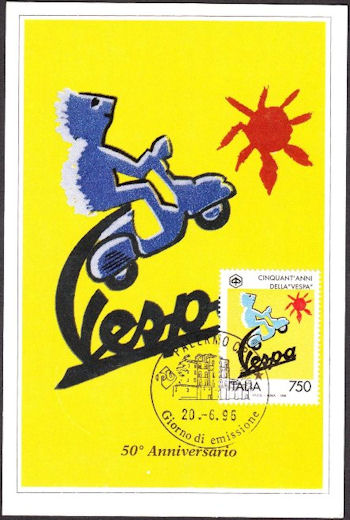
The whole background would have been printed in a yellow colour. In this case a printing plate with a screen should have been used to print the colour evenly over the paper. With the Vespa Giallo's that are now circulating the yellow background colour is printed over the whole stamp and there is an extra yellow area on the stamp. This small area would not add anything to the image, as the card to be reproduced is evenly yellow.
The third story is the story that has been launched by an employee of the printing-works.
It was indeed the intention to print the whole stamp background in yellow. But this gave problems with the shaving-perforation of the rolls. During the shaving of the perforation the still slightly wet paper is lifted a bit by a roll with pins, after which the lifted circles are "shaved off" by sharp knives. This produces a round hole that, when observed with a magnifying glass, appears a bit torn on one side. During this process the yellow colour came on both the front side and the gummed back side of the stamp. As this did not meet the quality that I.P.Z.S. wanted to deliver, it was decided in consultation to keep the margins unprinted, and print a rectangle on the stamps as background. The Intaglio-press works with etched printing plates that are bend around cilinders, and the unicoloured plate had been removed and a new plate, with only the rectangle etched in it, was put on the next printing pass (read: printing cilinder). But the printing ink was left in the ink container of the unicoloured plate and during the starting of the press this cilinder was still participating in the printing process, resulting in a uniform yellow colour, without screen, with on top of it the yellow rectangle.
 This also explains why the yellow colour ended on the other colours, which makes that the blue now looks a bit greenish. This also explains why the yellow colour ended on the other colours, which makes that the blue now looks a bit greenish.
Off course it takes some time before this kind of error is noted, and before the press is stopped several meters of paper have already been printed.
Naturally these misprinted sheets may never leave the printing-works and should be destroyed. But what if a less neat person pilfers these sheets, keeps them in the cabinet for a few years, and when old and retired wants to convert the "misprints" into cash?
The last story that I know is about test printing sheets. To get the product to be printed approved, some test prints must be made and shown to the minister for approval. In the Italian State Gazette (can be viewed online) we can read that already on January 17th 1995 the contract for this stamp production was tendered, and on June 14th that year it was granted to the printer.
In the same decree all facts of the stamp to be printed are listed, and amongst them is that the image should be put on a completely yellow background. The story above can thus be true for a big part. But I can not believe the story of the printing trash. The checks during and after the printing process are so extensive, that it will be almost impossible to pilfer some material. But..... nothing is impossible. But I belief more that in the approval process several sheets or stamps, loose or in blocks of 4, have circulated for approval and that these have popped up, years after the issue.
Several renowned inspectors have checked the genuineness of the stamps and a single one has issued a certificate, although the one here below is not numbered.
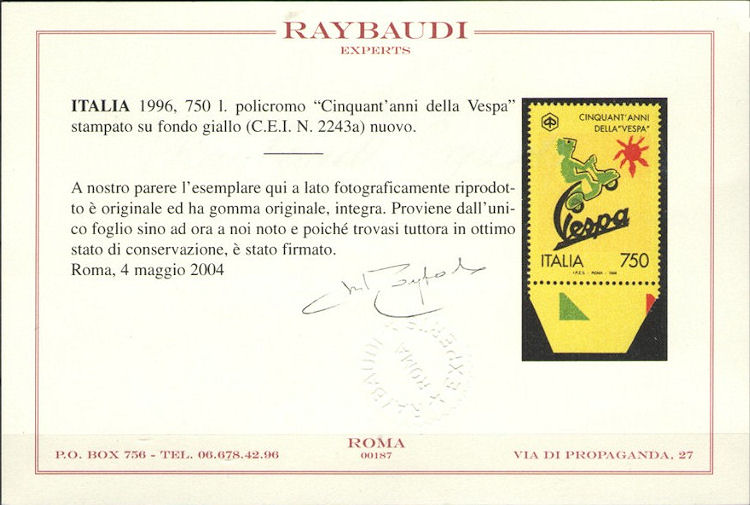
There is also 1 letter with the yellow stamp, but this one has been qualified as fake.
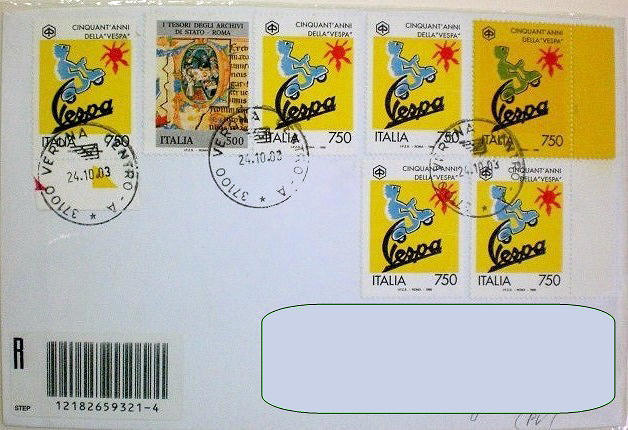
Hans de Kloet
Top - Back to former page - Home |